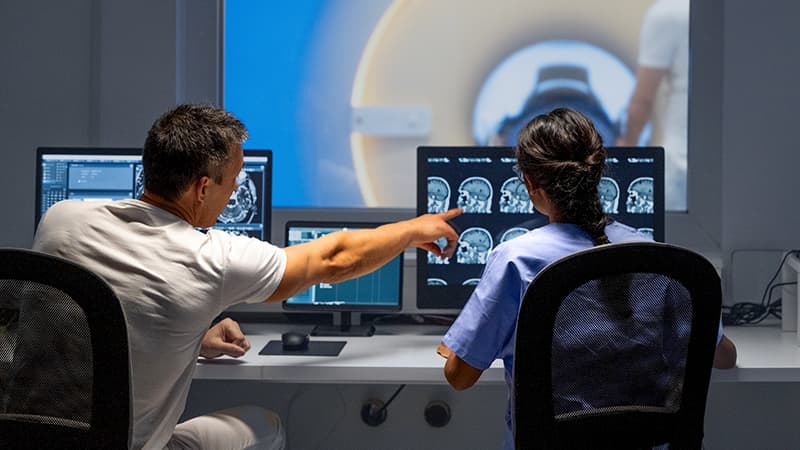October 2023
Emerging Technology Trends in the Life Sciences Industry

Worth a mammoth US$2.83 trillion in 2023, the global life sciences industry encompasses biotech, medtech, and pharmaceuticals. This vitally important sector would not exist without technology, and it makes sense that emerging technology trends in this industry can have powerful implications for the future of health and well-being.
In this article, we examine the impact of AI on life sciences trends, including advancements in biotechnology and genomics, data analytics and big data, IoT and wearables, and cybersecurity challenges.
The impact of AI on life sciences
In 2022, the global AI in life sciences analytics market was worth $1.5 billion. The market is predicted to grow at a CAGR of 11.1% from 2023 to 2030.
AI continues to transform research and diagnostics. Technology powered by AI can examine and cross-reference massive, complex datasets, producing more reliable data at a faster rate. Companies can use AI combined with machine learning to streamline and speed up the development of treatments for cancers and diseases, and pharma companies are already actively investing in developing AI tools to interpret complex databases quickly and accurately.
Advancements in biotechnology and genomics
The global biotechnology market surpassed the $1 trillion mark in 2022 and is expected to soar to $3.44 trillion by 2030. With such robust growth, biotech and genomics have seen breakthroughs and advancements, giving rise to various trends.
Among the recent significant advancements are:
- US- and Israel-based Ultima Genomics’ cracking of the $100 genome, resulting in a sixfold reduction over existing sequencing costs in 2022.
- 10X Genomics’ Fixed RNA Profiling Kit, Nuclei Isolation Kit, and Xenium platform, launched in December 2022, which makes it possible to precisely map gene activity in time and space to enable more effective targeted treatments for diseases.
- Abcam’s launch of 9,000 new lab-designed and synthesized antibodies, brings its catalog to more than 29,000 products – double the size of its largest competitor.
Data analytics and big data
The global life sciences analytics market is expected to grow at an 11.83% CAGR to generate $15.95 billion in profit between 2021 and 2025, thanks to the rise of data analytics and big data.
According to research, life sciences businesses are leveraging big data, data analytics, and AI for different crucial objectives. These objectives include existing product enhancement (28%), new product and service creation (27%), and process optimization (22%). Data analytics and big data are increasingly being used to enhance efficiency in every stage of the drug discovery process.
IoT and wearable devices in healthcare
IoT and wearable devices have a growing influence on healthcare, particularly patient care. The ‘Internet of Medical Things’ market grew to more than $158.1 billion in 2022. In 2023, technologies connected to the IoMT market comprised 42% of research and development budgets.
This trend is helping to improve the accuracy, insight, and speed of diagnosis and treatment, as these devices enable real-time data collection from multiple sources, usually at the place of activity. Along with greater personalization, IoT and wearable devices see users change from being passive care recipients to being active participants in their healthcare.
Cybersecurity challenges in life sciences technology
In the first half of 2022, 2.8 billion malware attacks and more than 236 million ransomware attacks occurred around the world. Life sciences and healthcare providers were among the targets, and many companies have reported a significant increase in such attacks since 2020.
Relentless cybersecurity challenges have led to trends such as regular privacy and security risk assessments and policy evaluations, as well as cybersecurity insurance coverage, enterprise-wide personal information data collection and retention practice evaluations, ongoing cybersecurity training for all employees, and updating vendor contracts.
Staying ahead of the curve
Stay ahead of the curve by keeping your finger on the pulse of technology and other trends in the life sciences industry. Partner with EPM Scientific, a leading specialist recruiter in the life sciences field. Submit a vacancy or request a call back now for a confidential conversation about your hiring needs.
